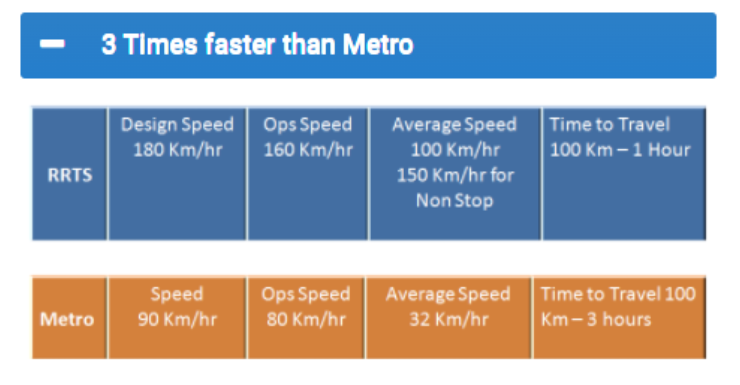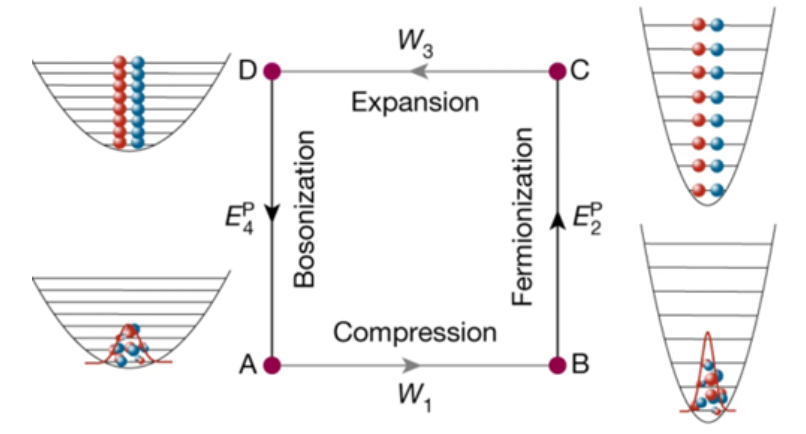Tuesday, 24th October 2023
Sustainable Agrifood System - Edukemy Current Affairs
In News:
Recently The Indian government recently inaugurated the 16th Agricultural Science Congress (ASC) in Kochi, Kerala, with the goal of promoting sustainability in the agri-food system.
About
Agricultural Science Congress is a meeting for experts in the agricultural field to discuss important issues and advancements in agriculture and related sciences. It is organized by NAAS, a prestigious organization in India that promotes agricultural science and research.
About Sustainable Agrifood System
Sustainable agri-food systems are a way of producing, distributing, consuming, and managing food that is good for the environment, society, and the economy.
Sustainable agri-food systems aim to:
- Meet Current Needs
- Ensure long-term sustainability
- Improve livelihoods
- Promote social well-being
- Minimize negative impacts on the environment
Global agri-food systems are responsible for a lot of greenhouse gas emissions. In 2020, they emitted 16 billion tonnes of carbon dioxide equivalent, an increase of 9% since 2000.
Examples of sustainable agri-food practices:
- Growing crops without using synthetic pesticides and fertilizers
- Raising livestock in a way that is good for the animals and the environment
- Reducing food waste
- Eating a more plant-based diet
Why it is important to adopt sustainability in agri-food systems?
- Rising demand for food: The global population is growing, and with it, the demand for food. Sustainable agri-food systems are essential to ensure that we can produce enough food to feed everyone, without harming the environment.
- Environmental degradation: Unsustainable agricultural practices have caused widespread environmental damage, such as soil erosion, water pollution, and biodiversity loss. Sustainable agri-food systems can help to reverse this damage and protect the environment for future generations.
- Climate change challenges: Climate change is a major threat to agriculture. Sustainable practices can help farmers to adapt to climate change and reduce the sector's contribution to climate change.
India has a number of sustainable and climate-resistant agricultural practices that are recognized by the Globally Important Agricultural Heritage Systems (GIAHS) program. Some examples include:
- Pokkali rice: Pokkali rice is a variety of rice that is grown in tidal wetlands in Kerala, India. It is a salt-tolerant crop that can be grown in areas that are affected by sea level rise and saltwater intrusion.
- Kuttanad below Sea Level Farming System: The Kuttanad below Sea Level Farming System is a unique system of agriculture that is practiced in the Kuttanad region of Kerala, India. The region is below sea level, and farmers use a system of canals and dikes to control the water levels. This system allows farmers to grow crops such as rice, vegetables, and coconuts in an area that would otherwise be unusable for agriculture.
Ways to adopt sustainability in Agri-Food Systems?
There are a number of ways to adopt sustainability in agri-food systems, including:
- Technological interventions: Scientific innovations and advanced technologies can help farmers to use resources more efficiently and reduce their negative environmental impact. For example, precision agriculture technologies can help farmers to apply fertilizers and pesticides more precisely, and smart irrigation systems can help farmers to use water more efficiently.
- Advanced Biotechnology and other modern technologies: Genome editing and other modern technologies can be used to develop new crop varieties that are more resistant to pests and diseases, more tolerant to drought and other climate stresses, and more nutritious. This can help farmers to reduce their reliance on synthetic fertilizers and pesticides, and to produce more food on less land.
- Low carbon and carbon neutral agricultural practices: Farmers can adopt a number of carbon-neutral agricultural practices to mitigate climate impacts and promote environmental sustainability. For example, they can plant cover crops, which help to improve soil health and sequester carbon from the atmosphere. They can also use manure management practices that reduce methane emissions.
some specific examples of sustainable agri-food practices:
- Crop rotation: Rotating crops helps to improve soil health and reduce the need for pesticides.
- Cover cropping: Cover crops help to improve soil health, reduce erosion, and suppress weeds.
- Integrated pest management (IPM): IPM is a holistic approach to pest management that uses a variety of methods to control pests, including biological control, cultural practices, and pesticides.
- Agroforestry: Agroforestry is the practice of integrating trees and shrubs into agricultural production systems. This can help to improve soil health, reduce erosion, and provide habitat for beneficial insects.
- Organic farming: Organic farming is a system of agriculture that avoids the use of synthetic pesticides and fertilizers.
Challenges to Adopting Sustainable Agri-Food Systems
|
Challenges |
How they Impact Consumers and Farmers |
|
According to the Food and Agriculture Organization of the United Nations (FAO), one-third of all food produced for human consumption is wasted each year. This food waste occurs at all stages of the food supply chain, from production to processing to distribution to consumption. |
Food waste and loss can lead to higher food prices and food insecurity. It can also have a negative impact on the environment, as wasted food decomposes and releases methane, a greenhouse gas |
|
Agriculture is a major contributor to greenhouse gas emissions, water pollution, and soil degradation. For example, agriculture accounts for about 14.5% of global greenhouse gas emissions. |
Climate change can make it more difficult for farmers to produce crops. For example, droughts and floods can damage crops and reduce yields. Climate change can also lead to the spread of pests and diseases. |
|
Agriculture is a major user of water, land, and energy. These resources are becoming increasingly scarce due to population growth, climate change, and other factors. |
Resource scarcity can make it more expensive for farmers to produce crops. For example, if water becomes scarce, farmers may have to pay more for irrigation |
|
Modern agricultural practices, such as monoculture and the use of synthetic pesticides and fertilizers, can lead to biodiversity loss. Biodiversity is essential for healthy ecosystems, which provide important services such as pollination, pest control, and water purification. |
Biodiversity loss can make it more difficult for farmers to control pests and diseases. It can also reduce the nutritional value of crops |
|
Monoculture, or the practice of growing only one crop in a field, can make the food supply more vulnerable to pests, diseases, and extreme weather events. Crop diversity is essential for a resilient and sustainable food system |
Monoculture can lead to crop failures, which can impact food prices and food security. Crop diversity can help to reduce the risk of crop failures and make the food supply more resilient |
Government initiatives to promote agri-food systems in India:
- Agriculture Infrastructure Fund (AIF): The AIF is a Rs. 1 lakh crore fund that was launched in 2020 to provide financial assistance for the development of agricultural infrastructure, such as post-harvest management facilities, cold storage, and irrigation facilities.
- Pradhan Mantri Kisan Samman Nidhi (PM-KISAN): The PM-KISAN scheme is a direct income support scheme that provides Rs. 6,000 per year to all eligible farmer families.
- Pradhan Mantri Krishi Sinchai Yojana (PMKSY): The PMKSY scheme aims to improve access to irrigation for farmers. It has two components: the Accelerated Irrigation Benefits Programme (AIBP) and the Pradhan Mantri Krishi Sinchai Yojana – Per Drop More Crop (PMKSY-PDMC).
- National Mission for Sustainable Agriculture (NMSA): The NMSA aims to promote sustainable agriculture practices in India. It has four components: soil health management, water conservation, integrated pest management, and climate change adaptation.
- Mission for Integrated Development of Horticulture (MIDH): The MIDH scheme aims to promote the development of the horticulture sector in India. It has four components: production, protection, post-harvest management, and marketing.
In addition to these schemes, the government also provides a number of other subsidies and incentives to farmers to promote sustainable agriculture practices. For example, the government provides subsidies for the purchase of organic fertilizers and pesticides.
|
UPSC CSE Previous Year Question (PYQ) Prelims (2014) Q1. What are the significances of a practical approach to sugarcane production known as ‘Sustainable Sugarcane Initiative’?
Select the correct answer using the code given below: (a) 1 and 3 only Answer: (b) Mains (2019) Q. How far is Integrated Farming System helpful in sustaining agricultural production? Q. What are the reformative steps taken by the Government to make the food grain distribution system more effective? |
Source: PIB
Need for a National Crisis Management Response Framework
In News: Given the recent attack in Israel, the Director of India's National Security Guard has emphasized the significance of establishing a national crisis management response framework for handling extreme terrorist situations.
Need for National Crisis Management Response Framework:
- Readiness for Unforeseen Threats
- Extreme terrorist scenarios frequently occur suddenly, demanding a carefully planned state of readiness.
- A crisis management framework guarantees that government bodies are adequately prepared to confront unanticipated security threats.
- Coordination across Multiple Agencies
- Effective counterterrorism requires seamless coordination among diverse federal and state entities.
- This framework will create explicit guidelines for cooperation and communication during critical events.
- Mitigating the Impact of Terrorist Incidents
- Rapid and coordinated responses can significantly reduce the impact of terrorist incidents, minimizing casualties and damage.
- A structured crisis management framework provides guidance on mitigation strategies.
- Safeguarding Critical Infrastructure
- Terrorists frequently target critical infrastructure, endangering national security.
- The framework should incorporate measures to protect vital infrastructure during a crisis, ultimately enhancing national security.
- Enhancing Counterterrorism Capabilities
- The framework encourages continuous training and skill development for personnel involved in counterterrorism efforts.
- Ongoing investment in skills and capabilities ensures that responders remain at the forefront of their craft.
- The framework should acknowledge the synergy between advanced technology and highly skilled personnel.
- Border Security Challenges
- India's immense landmass and its strategic location in Southern Asia give rise to significant security concerns.
- India's 7,683 km coastline and a vast Exclusive Economic Zone (EEZ) necessitate robust maritime security measures.
- With over 15,000 km of land borders shared with seven countries, including challenging borders with China and Pakistan, the demand for effective border management is paramount.
- Porous borders and challenging terrain add complexity to security. Issues include cross-border terrorism, militant infiltration/exfiltration, and the rise of non-state actors.

Source: TH
Blueprint for Transforming the Blue Economy
In News: During the Global Maritime India Summit 2023 in Mumbai, the Indian Prime Minister introduced the 'Amrit Kaal Vision 2047,' outlining a comprehensive plan for the nation's maritime blue economy.
The vision encompasses various initiatives such as the development of Advanced Mega Ports, the establishment of an International Container Trans-Shipment Port, the development of islands, the expansion of inland waterways, and the creation of multi-modal hubs to enhance trade efficiency.
Additionally, the Prime Minister emphasized the government's maritime sector vision, encapsulated in the phrases 'Ports for Prosperity' and 'Ports for Progress.'
Blue Economy
The blue economy is the sustainable use of ocean resources for economic growth, improved livelihoods, and jobs while preserving the health of the ocean ecosystem. It encompasses a wide range of activities, including fisheries and aquaculture, marine tourism, renewable energy, and maritime transportation.
Significance of the Blue Economy
The blue economy is important for a number of reasons, including:
- Food security: Fisheries and aquaculture provide a substantial portion of the world's protein sources. Sustainable practices in these sectors are essential for global food security.
- Environmental conservation: The blue economy promotes responsible resource management, supporting the preservation of marine biodiversity and ecosystems. Healthy oceans play a crucial role in climate regulation and carbon sequestration.
- Tourism and recreation: Coastal and marine tourism is a significant contributor to the global economy. The blue economy enhances opportunities for tourism and recreation, attracting visitors to coastal areas and promoting conservation awareness.
- Renewable energy: The blue economy encourages the development of renewable energy sources such as offshore wind, tidal, and wave energy, reducing reliance on fossil fuels and mitigating climate change.
- Transportation and trade: Maritime shipping is a lifeline for global trade. Efficient and sustainable maritime transportation is vital for the global economy.
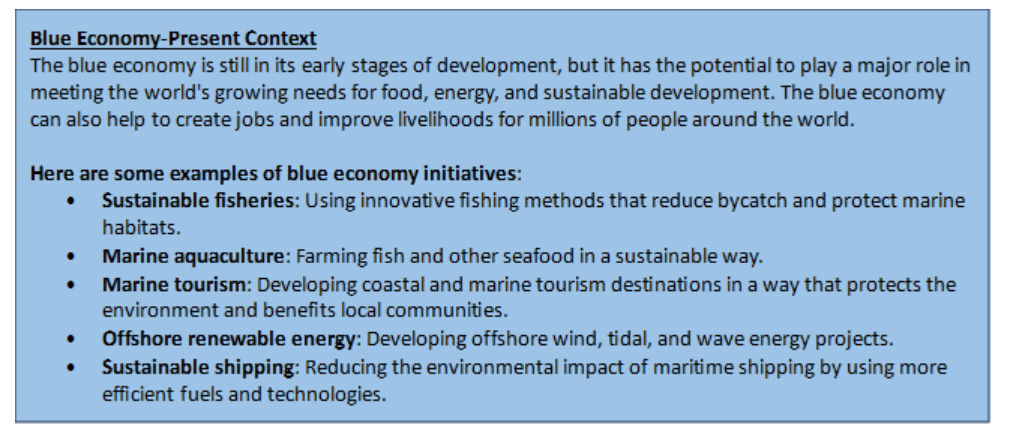
The following are some of the challenges related to India's blue economy:
- Fragmented fishing industry: India's fishing industry is highly fragmented, with a large number of small-scale fishermen who lack access to credit and modern technology. This makes it difficult for them to compete with larger, more industrialized operators.
- Additionally, overfishing, driven by a lack of regulation, is a major threat to the sustainability of the industry.
- Climate change and natural disasters: Climate change poses a significant threat to the blue economy through sea-level rise, increased ocean acidity, and extreme weather events. These impacts can damage coastal infrastructure, disrupt fisheries, and reduce the attractiveness of marine tourism destinations.
- Waste and pollution: Pollution, including marine litter, chemical pollutants, and untreated sewage, is a major threat to the health of marine ecosystems. Additionally, the introduction of non-native, invasive species through oil spills and other means can disrupt marine ecosystems and negatively impact indigenous species and industries.
- Congestion in ports: Many Indian ports experience congestion due to inadequate maintenance infrastructure, inefficient operations, and high cargo volumes. This can lead to delays and increased costs for businesses.
- India's blue economy also faces a number of other obstacles, such as a lack of skilled workers, inadequate investment in research and development, and complex regulatory systems.
Way Forward
- Policy Reforms and Governance: Develop a comprehensive and stable regulatory framework that applies uniformly across all sectors of the Blue Economy. This framework should address fragmentation, inconsistencies, and encourage responsible and sustainable practices through effective enforcement and incentives. Simplify customs and documentation processes to accelerate cargo clearance at ports.
- Infrastructure Enhancement: Make substantial investments in the modernization and expansion of port infrastructure, including berths, terminals, and equipment, to efficiently handle the increasing cargo volumes. Enhance road and rail connectivity to ports, ensuring smooth cargo movement to and from the hinterland.
- Sustainable Fishing: Promote responsible fishing and aquaculture practices through education, incentives, and regulations that tackle issues like overfishing and environmental degradation. Enforce stringent pollution control measures and establish effective waste management systems to protect marine ecosystems.
- Investment and Financing: Attract private sector investments in Blue Economy sectors by fostering public-private partnerships, offering incentives, and providing financial support. Facilitate small and medium-sized enterprises (SMEs) in the Blue Economy's access to credit and financing to stimulate their growth.
- Boosting Shipbuilding Industry: To encourage innovation in shipbuilding and repair, India should establish research and development centres in collaboration with the private sector, with a specific focus on advanced materials and green technologies.

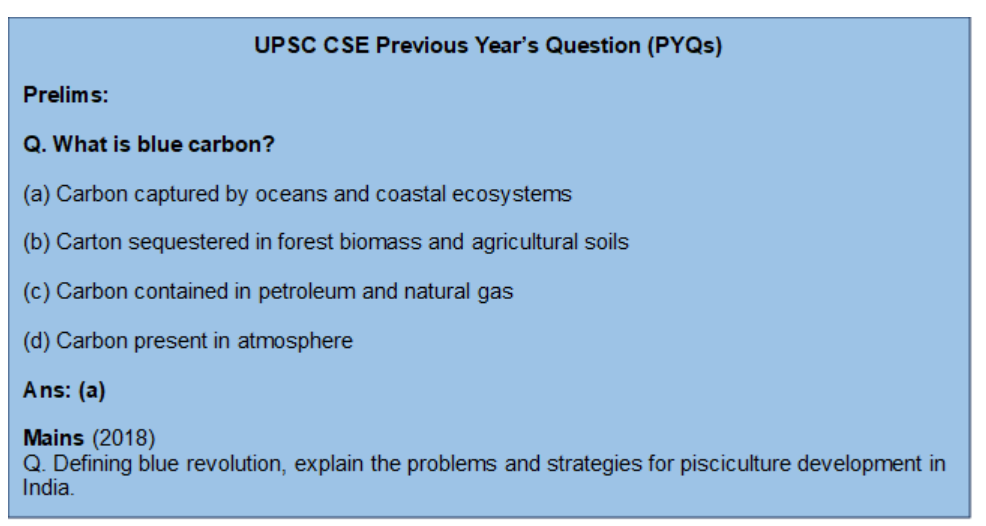
Source: TH
White Phosphorus Munitions - Edukemy Current Affairs
In News: Amnesty International and Human Rights Watch have accused the Israel Defence Forces (IDF) of violating International Humanitarian Law (IHL) by using white phosphorus munitions in Gaza and Lebanon.
About White Phosphorus:
- White phosphorus is a substance that spontaneously ignites when it comes into contact with oxygen, generating thick, light smoke and intense heat reaching temperatures of 815 degrees Celsius.
- Pyrophoric substances are those that ignite rapidly, typically within five minutes, upon exposure to air.
Global Classification:
- White phosphorus is classified under the Globally Harmonized System of Classification and Labelling of Chemicals as a "Pyrophoric solid, category 1."
- This category includes substances that can spontaneously ignite when exposed to air. White phosphorus is recognized as one of the most unstable pyrophoric substances globally.
Applications:
- White phosphorus is incorporated into artillery shells, bombs, and rockets and can also be delivered using textile wedges soaked in the substance. Its primary military role is as a smokescreen, effectively concealing troop movements on the ground. The thick smoke it produces acts as a visual obscurant and interferes with infrared optics and weapons tracking systems.
- White phosphorus can be used as an incendiary weapon. For example, U.S. forces employed white phosphorus munitions during the second battle of Fallujah in Iraq in 2004 to compel concealed combatants to abandon their positions.
Harmful Effects:
- Exposure to white phosphorus can result in severe burns, often extending down to the bone, respiratory problems, and damage to infrastructure, crops, and livestock.
- It can lead to raging fires, particularly in windy conditions, causing significant harm to the environment and living beings.
Historical Background:
- White phosphorus munitions, with a formulation known as "Fenian fire," were initially used by Irish nationalists in the late 19th century. The term "Fenian" referred to a collective of Irish nationalists.
- White phosphorus munitions have since found applications in various conflicts worldwide, including their use during the Normandy invasion in World War II and the protracted Nagorno-Karabakh conflict.
Legal Status:
- White phosphorus munitions are not subject to a comprehensive ban, but their use is regulated under International Humanitarian Law (IHL). They are not categorized as chemical weapons since their operational function primarily relies on heat and smoke rather than toxicity.
- The use of white phosphorus munitions is governed by the Convention on Conventional Weapons (CCW), specifically under Protocol III, which addresses incendiary weapons.
This protocol serves two key purposes:
- It restricts the use of certain ground-launched incendiary weapons in situations where there is a concentration of civilians.
- The protocol's definition of incendiary weapons pertains to those "primarily designed" to ignite and burn people, potentially excluding multipurpose munitions containing white phosphorus, which are primarily considered "smoking" agents.

Source: IE
Drought in the Amazon Rainforest
In News: The Amazon Rainforest, often described as the "lungs of the Earth," is presently grappling with an extraordinary and severe drought, garnering considerable attention due to its far-reaching consequences. This environmental crisis is not only affecting the rainforest itself but is also causing significant disruptions to the lives of Indigenous peoples and is impacting the entire ecosystem.
Contributing Factors to Drought in the Amazon Rainforest:
- El Niño Phenomenon: One of the primary factors behind drought in the Amazon is the El Niño phenomenon. This natural occurrence involves abnormal warming of the surface waters of the Pacific Ocean, influencing rainfall patterns. In the Amazon region, El Niño leads to reduced humidity and diminished rainfall, worsening drought conditions.
- High Water Temperatures in the Northern Tropical Atlantic Ocean: Unusually high-water temperatures in the northern tropical Atlantic Ocean play a crucial role. The warm ocean waters cause heated air to rise into the atmosphere, which then reaches the Amazon rainforest. This warm air inhibits cloud formation, resulting in a sharp reduction in rainfall.
- Anthropogenic Climate Change: Human-induced climate change compounds the situation. Deforestation, primarily driven by activities such as agriculture and logging, disrupts the Amazon's ability to regulate climate and retain moisture. The loss of extensive vegetation also contributes to rising temperatures, creating a cycle of increasingly severe droughts. The reduction in vegetation leads to decreased evapotranspiration and heightened susceptibility to drought.
- Mining Activity: Unregulated mining in the region worsens the issue by creating land banks that obstruct river navigation. The alteration of aquatic and terrestrial ecosystems through mining releases pollutants and greenhouse gases, further impacting the climate.
- Hydroelectric Dams: The construction and operation of hydroelectric dams, particularly on the Madeira River, a major Amazon tributary, contribute to drought scenarios. The creation of reservoirs for power generation alters natural river flows and affects aquatic and terrestrial ecosystems. Decomposing organic matter in these reservoirs’ releases methane, a potent greenhouse gas, into the atmosphere.
- Transportation Infrastructure: The development of infrastructure, such as highways, can exacerbate the impact on the rainforest by cutting through protected areas, increasing deforestation, and intensifying climate anomalies in the biome.
- Disruption of the Water Cycle: All these factors collectively disrupt the natural water cycle in the Amazon region. This results in reduced water volume in rivers, prolonged droughts, and adverse consequences for aquatic fauna, riparian habitats, and local communities that rely on these water resources.
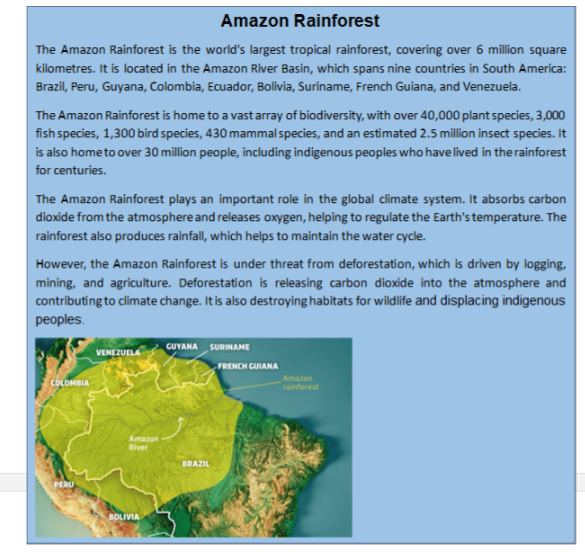
Impacts of the Amazon Rainforest Drought:
The ongoing drought in the Amazon Rainforest has unleashed a cascade of far-reaching consequences, including:
- Severe Water Level Reduction: The drought has led to a substantial drop in water levels across many rivers, notably the Rio Negro, a significant tributary of the Amazon. This once-mighty river has reached a historic low water level, causing dire repercussions.
- Humanitarian Crisis: Tens of thousands of people find themselves stranded in remote jungle villages, with limited access to essential resources such as food, drinking water, medicine, and other supplies. In some of these communities, outbreaks of diseases like diarrhoea and skin infections have been reported due to the consumption of contaminated water.
- Impact on Biodiversity: The drought has significantly affected the biodiversity and wildlife of the rainforest. Hundreds of fish and Amazon River dolphins, locally known as boto or pink river dolphins, have been discovered lifeless, their decaying remains polluting the water. Many animals in the region are grappling with hunger and thirst, as their habitats and food sources are dwindling.
- Elevated Risk of Forest Fires: The drought has amplified the risk of forest fires, leading to record-high fire incidents in certain areas. These fires have decimated extensive stretches of vegetation, released substantial amounts of carbon dioxide into the atmosphere, and created a thick haze of smoke that has severely degraded air quality and visibility in numerous cities. The combined impact poses a grave threat to the environment and public health.
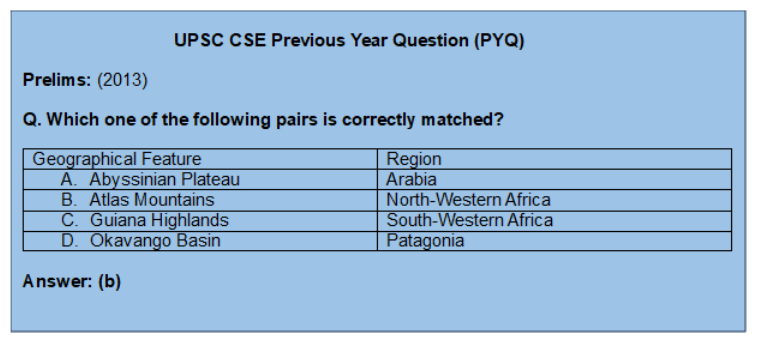
Source: IE
Australia’s Indigenous People - Edukemy Current Affairs
In News: In a recent development, advocates for constitutional change in Australia, specifically the establishment of an Indigenous Committee, acknowledged their defeat in a referendum with the objective of establishing an Indigenous Voice to Parliament.
To pass, the referendum required majorities in at least four of the six Australian states, in addition to a national majority. The proposed referendum aimed to modify Australia's Constitution to formally acknowledge the First Peoples of the country, encompassing both Aboriginal and Torres Strait Islander communities.

About Aboriginal or Indigenous Australians
- Indigenous Australians, often referred to as Aboriginals, are the descendants of the original inhabitants of Australia and the Torres Strait Islands. They have a rich and diverse heritage that predates European colonization by at least 45,000 years. However, the arrival of European settlers in the 18th century had profound and enduring consequences for these communities.
- Despite their long and deep-rooted history, Indigenous Australians make up a relatively small proportion of the Australian population, constituting only 3.8% of the country's total populace.
- The historical mistreatment of Indigenous Australians, including policies like the forced removal of Indigenous children (Stolen Generations) and land dispossession, as well as pervasive discrimination, have resulted in enduring social and economic disparities. Indigenous communities often grapple with lower life expectancy, elevated rates of disease, and limited access to essential services, including education.
- Australia has taken significant measures to address past injustices, including the publication of the "Bringing Them Home" report, which acknowledged and apologized for the Stolen Generations. National inquiries and formal apologies have aimed to recognize and address historical wrongs.
- Indigenous Australians gained the right to vote in 1962, and the High Court's landmark 1992 Mabo decision recognized native title over certain lands, marking a pivotal moment in Indigenous land rights.
- Since 1995, the Australian Aboriginal Flag and the Torres Strait Islander Flag have held official status as part of Australia's national flags, symbolizing the country's commitment to acknowledging and respecting its Indigenous cultures.
Source: TH
Supreme Court’s verdict on same-sex marriage
Context:
The Supreme Court's recent decision not to grant legal recognition to same-sex marriages is perceived as a setback for the LGBTQ+ community in India. Despite advancements in the law and an evolving understanding of individual rights, there was a widespread expectation that the five-judge Constitution Bench would interpret the Special Marriage Act (SMA) in a gender-neutral manner, encompassing same-sex couples.
Key observations made by the Supreme Court:
- It emphasized that the responsibility to enact laws for same-sex marriages lies with the legislature. While there is no central law, state legislatures have the authority to create laws recognizing and regulating such marriages.
- The minority opinion advocated for recognizing queer unions, even if not as marriages, as the right to form unions should not be limited by sexual orientation. However, the majority did not support recognizing the bouquet of rights associated with such unions.
- The Court upheld transgender individuals' right to marry within existing legal frameworks and highlighted the distinction between gender identity and sexual orientation. It also recognized intersex individuals' right to marry.
- The majority opinion refused to strike down the Central Adoption Resource Authority (CARA) regulations that restrict same-sex couples from adopting children. They cited the need to explore various options for the benefit of children in need.
- The Court acknowledged the need for equal rights for queer couples in areas like ration cards, joint bank accounts, pensions, and gratuity, although there was a difference of opinion on whether the judiciary or the legislative and executive branches should address these issues.
- The judgment also addressed the issue of violence faced by LGBTQ+ individuals from their natal families and issued directives to prevent such coercion and violence.
- The verdict rejected the government's argument that same-sex unions are unnatural or non-Indian and acknowledged the historical presence of queer love in India.
However, there are several issues related to the judgment:
- Critics argue that the verdict violates the fundamental rights of LGBTQIA+ individuals, including the right to equality, dignity, and autonomy as recognized in previous Supreme Court judgments.
- The judgment fails to consider the lived experiences of LGBTQIA+ individuals who face discrimination, violence, and stigma due to their sexual orientation and gender identity.
- Some believe the verdict undermines the principle of constitutional morality and imposes the views of the majority on minority groups.
- Same-sex couples are denied the legal and social benefits of marriage, such as inheritance, adoption, and insurance.
- The verdict is seen as contradictory to international human rights standards, which uphold the right to marry and establish a family for all individuals, regardless of their sexual orientation and gender identity.
For the LGBTQ+ community, there are several options moving forward:
- Pursuing legal avenues, including waiting for the government committee's report and potentially filing new cases if it aligns with their arguments.
- Challenging discrimination through individual battles for specific rights associated with marriage, like joint bank accounts or pension rights.
- Engaging in political activism, making queerness a part of political discussions and demands, particularly in the lead-up to the 2024 Lok Sabha elections.
- Exploring alternative ways to expand LGBTQ+ rights, including community-building, education, and public awareness campaigns.
The Supreme Court's decision to not grant legal recognition to same-sex marriages has shifted the responsibility to the legislature. While personal choice is protected by the Constitution, the path to legal equality for the LGBTQIA+ community remains challenging.
Share the article
Edukemy’s Current Affairs Quiz is published with multiple choice questions for UPSC exams
MCQ
Get Latest Updates on Offers, Event dates, and free Mentorship sessions.

Get in touch with our Expert Academic Counsellors 👋
FAQs
UPSC Daily Current Affairs focuses on learning current events on a daily basis. An aspirant needs to study regular and updated information about current events, news, and relevant topics that are important for UPSC aspirants. It covers national and international affairs, government policies, socio-economic issues, science and technology advancements, and more.
UPSC Daily Current Affairs provides aspirants with a concise and comprehensive overview of the latest happenings and developments across various fields. It helps aspirants stay updated with current affairs and provides them with valuable insights and analysis, which are essential for answering questions in the UPSC examinations. It enhances their knowledge, analytical skills, and ability to connect current affairs with the UPSC syllabus.
UPSC Daily Current Affairs covers a wide range of topics, including politics, economics, science and technology, environment, social issues, governance, international relations, and more. It offers news summaries, in-depth analyses, editorials, opinion pieces, and relevant study materials. It also provides practice questions and quizzes to help aspirants test their understanding of current affairs.
Edukemy's UPSC Daily Current Affairs can be accessed through:
- UPSC Daily Current Affairs can be accessed through Current Affairs tab at the top of the Main Page of Edukemy.
- Edukemy Mobile app: The Daily Current Affairs can also be access through Edukemy Mobile App.
- Social media: Follow Edukemy’s official social media accounts or pages that provide UPSC Daily Current Affairs updates, including Facebook, Twitter, or Telegram channels.

